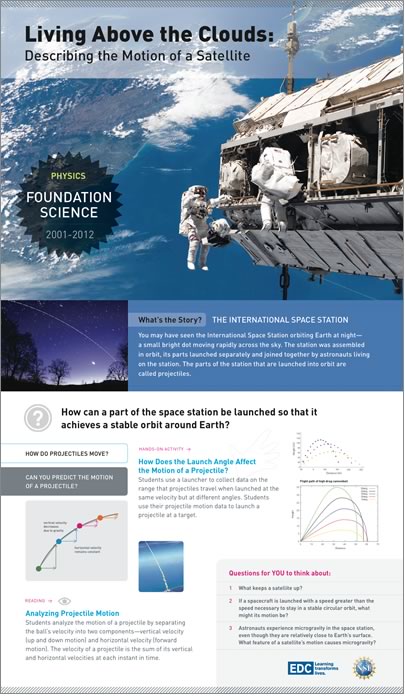 Physics
Physics
The two semesters of Foundation Science: Physics are designed to be the equivalent of a full-year introductory course in high school level physics. Throughout the two semesters, there are four big ideas that thread through this examination of the interactions of matter and energy.
- The motion of objects can be modeled and predicted by considering the interrelationships among mass, distance, force, and time.
- Whenever the amount of energy in one place or form diminishes, the amount in other places or forms increases by the same amount; in many processes, energy is transferred to the environment as heat.
- Energy can be carried from one place to another by moving objects, or by waves including water waves, light, and sound, or by heat.
- The principles of physics explain many of the events we experience and have also been applied to make many of the machines and devices we use.
These four ideas are presented in both semesters; the first semester introduces students to core physics concepts, and can be used independently as the first half of a ninth-grade physical science course. The core concepts that students study are the measurement of motion, forces, Newton’s Laws, energy, electrostatic induction, waves, and heat. In the second semester of Foundation Science: Physics, students are given an opportunity to further apply and deepen their understanding of the concepts introduced in the first semester. This second half can be used with the first half as a full year ninth-grade physics course. Students study the topics of gravity, projectile motion, momentum, electricity, magnetic and electromagnetic induction, sound, light, and thermodynamics.
Throughout both semesters, students explore examples of natural phenomena and technology that can be explained by or are based in the principles of physics. They learn the basic principles that relate to changes in motion, force interactions, drive wheels, energy transfers and transformations, waterwheels, lightning, fires, parachutes, circuits, capacitors, generators, motors, sonar, lenses, heat engines, and air conditioning systems. Every effort has been made to align content to national standards.
Mini Site: Using the History of Science in the Physics Classroom
This site contains specific resources and suggestions for how the history of science might be integrated into an introductory physics classroom. Features include annotated lists of links to Web resources on the history of physics, using the history of science in teaching, and historical entries that have been created to align both to standards and students’ sense of curiosity and interest.
![]() View a PDF Poster of a sample lesson.
View a PDF Poster of a sample lesson.
See a table of contents for the curriculum.
Currently, the first semester of the physics curriculum student book is available online. The materials for the second semester are available upon request.

